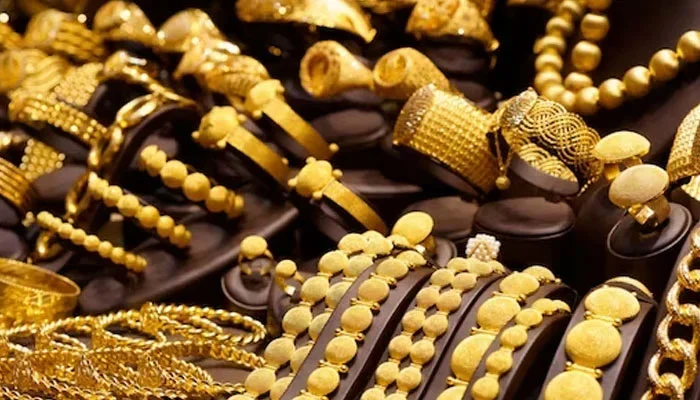Dubai, UAE – The UAE continues to rank as the world’s fifth-largest market for gold jewellery demand, despite a notable decrease in consumption over the past year. The persistent allure of gold, which has surged to record highs above $2,400 an ounce in 2023, has kept the UAE a significant player in the global gold market.
Gold Jewellery Demand in the UAE
According to research by The Gold Bullion Company, the UAE shares the fifth position with Russia in terms of gold jewellery demand, each with an annual consumption of nearly 40 tonnes. Saudi Arabia follows in the seventh spot. In 2023, the UAE’s total gold consumption reached 39.7 tonnes, down from 46.9 tonnes in 2022, as reported by the World Gold Council (WGC). The WGC attributed the decline primarily to the high base effect from 2022, which saw a boost in demand due to the post-COVID-19 tourism surge.
In the first quarter of 2024, gold jewellery demand in the UAE fell 10% year-on-year to 10.8 tonnes, the lowest level observed in the past nine months. Despite this decline, the UAE boasts the world’s second-highest consumer demand for gold jewellery per capita at 5.07 grams, closely trailing Hong Kong’s 5.12 grams.
Global Gold Jewellery Market Overview
Globally, the jewellery industry accounted for 48.7% of gold demand last year, with the market cap of gold reaching an estimated $15.8 trillion. This marks an almost 20% increase in value compared to the previous year.
China emerged as the top consumer of gold jewellery in 2023, overtaking India with a demand of 630 tonnes, a 10% increase from the previous year. India’s gold jewellery demand stood at 562 tonnes, reflecting a 6% decrease. The surge in Chinese demand is partly driven by the metal’s cultural significance and its status as a safe-haven investment amid escalating geopolitical tensions and lower US interest rate prospects.
The United States ranks third in gold jewellery demand, maintaining substantial gold reserves worth $507 billion. Turkey occupies the fourth position with a demand of 42 tonnes.
READ:Gulf Region Prepares for Unified GCC Tourist Visa Launch with Exciting Travel Packages
Investment and Production Trends
China’s gold bar and coin investments surged by 28%, highlighting the country’s strong investment demand. China remains the world’s largest gold producer, contributing approximately 375 tonnes and accounting for 10% of global production in 2022.
North America leads in gold ETF holdings, with 1,581 tonnes, representing over half of the world’s total ETF holdings. The US and Canada are the primary contributors with 1,518 tonnes and 63 tonnes, respectively.
Cultural and Economic Implications
The study by The Gold Bullion Company notes the deep cultural significance of gold in China, where it is seen as a symbol of wealth and good fortune. This cultural affinity, combined with economic factors, bolsters the demand for gold jewellery and investment products. Similarly, in India, gold remains a popular asset due to its cultural importance and the nation’s substantial gold reserves, totaling approximately 804 tonnes.
Conclusion
Despite a decline in gold jewellery consumption, the UAE remains a dominant force in the global market. The ongoing appeal of gold as both an investment and a cultural asset ensures its continued relevance and demand. As global economic conditions and cultural trends evolve, the dynamics of gold consumption will likely adapt, sustaining the significance of key markets like the UAE.




